Culinary Time Capsules: The Resurgence of Ancient Cookware
Definition of Ancient Cookware
In gastronomy’s multifaceted domain, ancient cookware represents a profound confluence of culinary history, cultural evolution, and timeless utility. These cooking implements, employed extensively by various civilizations throughout history, exhibit diverse materials and constructions, reflective of the geographical, cultural, and resource-centric nuances of their origins. Ancient cookware includes, but is not limited to, the versatile Mexican comal, utilized predominantly for heating tortillas and grilling meats, and its counterpart, the comal grill, which serves a spectrum of grilling endeavors.
Thank you for reading this post, don't forget to subscribe!
Importance and Relevance in Contemporary Cuisine
The resurgence of ancient cookware in contemporary kitchens is not a mere homage to culinary antiquity but an insightful realization of the multifarious benefits these implements bring forth. The embracing of tools such as the Mexican griddle aligns with modern culinary affinities for flavor preservation, holistic cooking experiences, and sustainable practices. The outdoor comal, with its expansive surface and robust build, exemplifies adaptability, meeting the diversified cooking needs of the present while retaining the culinary essence of the past.
This amalgamation of past and present in the culinary sphere underscores the symbiotic relationship between ancient cooking techniques and modern culinary innovations, presenting an enriched tapestry of flavors, textures, and cooking experiences.
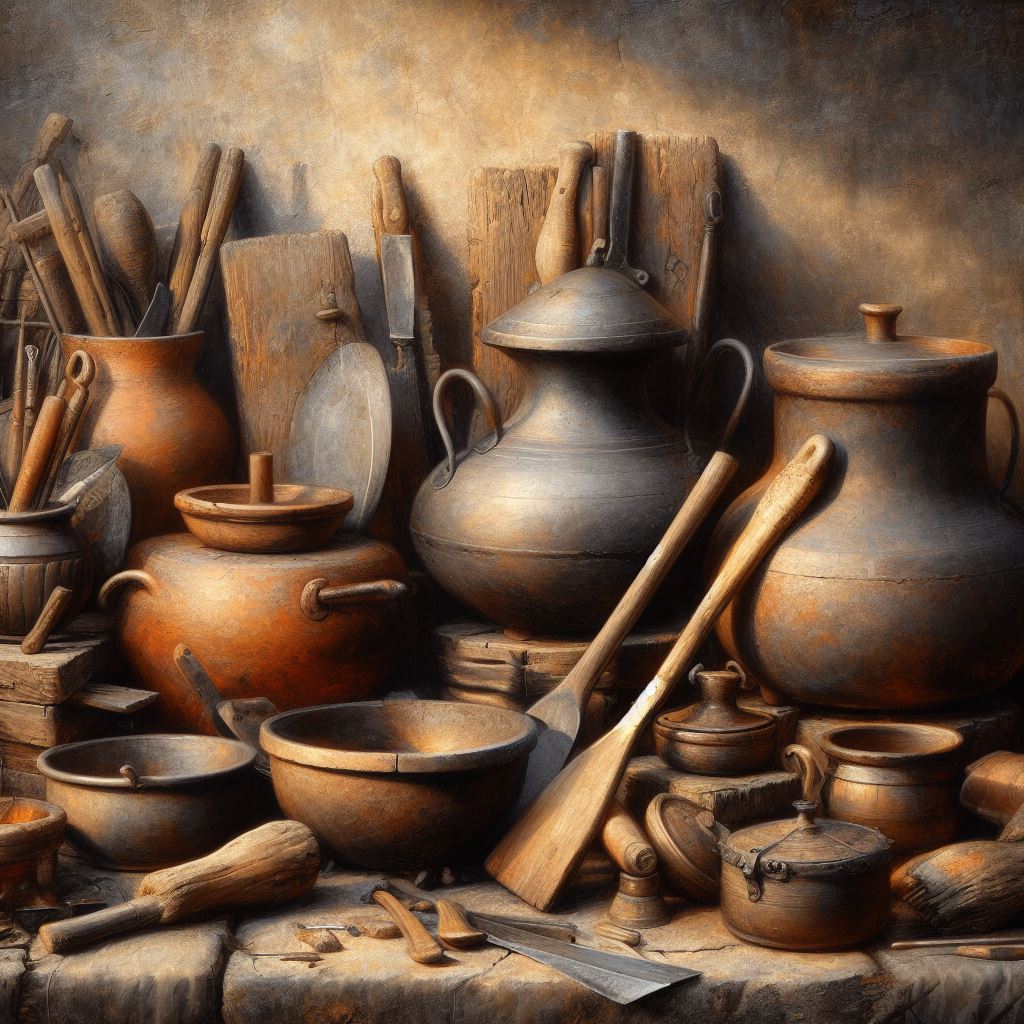
Brief Overview of Various Types and Their Origins
The repertoire of ancient cookware is vast and varied, each piece narrating a tale of its inception, journey, and evolution. Ranging from the clay and terracotta cookware, revered for their porous nature and even heating, to the durable and heat-retentive cast iron pieces, the spectrum is broad and diverse.
The Mexican comal, originating from the rich culinary landscapes of Mexico, stands as a testament to the ingenuity and resourcefulness of ancient cookware designs. Its broad, flat surface makes it an indispensable tool for the preparation of staples such as tortillas and for grilling a variety of foods.
Copper cookware, with its superior thermal conductivity and distinctive aesthetic appeal, has its roots in various civilizations, each contributing to its refinement and adaptation over the centuries.
The origins of these cookware pieces are deeply intertwined with the culinary traditions, societal norms, and resource availability of their respective civilizations, resulting in a rich and diverse array of cooking implements, each with its unique attributes, applications, and cultural significance.
A Wrap
The realm of ancient cookware is an intricate web of history, culture, and culinary science. The diverse array of implements, including the versatile Mexican comal and the robust comal grill, offers a glimpse into the innovative spirits of our ancestors and their inherent understanding of materials, heat, and flavor. The ongoing revival and integration of these timeless pieces in contemporary cuisine accentuate their enduring relevance, utility, and appeal, bridging the culinary philosophies of the bygone eras with the evolving gastronomic landscape of today.
Chapter 2: Historical Context of Ancient Cookware
2.1. The Evolution of Cookware through the Ages
Exploring the annals of culinary history reveals a fascinating journey of cookware development, epitomizing humanity’s unceasing pursuit of progress and innovation.
2.1.1. Stone Age to Bronze Age
The advent of cookware can be traced back to the Stone Age, where rudimentary cooking tools were fashioned from stone and bone. The transition to the Bronze Age marked a revolutionary phase, with metals like copper and bronze emerging as pivotal materials in cookware production, heralding an era of enhanced durability and thermal conductivity.
2.1.2. Iron Age to Middle Ages
The subsequent shift to the Iron Age witnessed the predominance of iron as the central material, elevating cookware’s resilience and versatility. The Middle Ages introduced a plethora of designs and functionalities, reflecting the diverse culinary demands of different regions and civilizations.
2.1.3. Renaissance to Modern Era
The Renaissance period, characterized by a resurgent interest in science and arts, propelled advancements in metallurgy and design, leading to refined cookware aesthetics and functionalities. The Modern Era embraced the amalgamation of traditional wisdom and innovative technologies, optimizing cookware for contemporary culinary needs.
2.2. Ancient Civilizations and Their Impact on Cookware Development
The imprints of ancient civilizations on cookware evolution are profound, reflecting their culinary philosophies, cultural nuances, and technological prowess.
2.2.1. Egyptian Civilization
The Egyptians, with their sophisticated metallurgical knowledge, pioneered the utilization of copper in cookware, enhancing heat distribution and culinary precision. The intrinsic connection between culinary practices and religious rituals in Egyptian culture amplified the importance of cookware in daily life.
2.2.2. Roman Civilization
The Romans, renowned for their engineering marvels and gastronomic extravagance, introduced innovative cookware designs, emphasizing utility and aesthetic appeal. The Roman influence permeated through various regions, ingraining their cookware ethos in diverse cultures.
2.2.3. Chinese Civilization
The Chinese civilization, with its rich culinary tapestry and metallurgical mastery, developed specialized cookware for a multitude of cooking techniques, such as steaming and stir-frying. The infusion of cultural and philosophical elements into cookware designs underscored the holistic approach to cooking in Chinese culture.
2.2.4. Indian Civilization
Indian civilization, characterized by its diverse culinary landscape and profound spiritual ethos, crafted cookware that harmonized with the multifarious cooking styles across the subcontinent. The meticulous attention to material selection and design reflected the symbiotic relationship between cookware and the intricate tapestry of Indian cuisines.
2.25. Mayan Civilization
Mayan civilization had a wide range of cookware that they used for preparing and cooking their food. One of the most common types of cookware was the comal, which was a flat griddle made of clay or stone. It was used for cooking tortillas and other flatbreads. Another popular cookware item was the olla, which was a large clay pot used for boiling and stewing food. The Maya also used a variety of clay pots and bowls for cooking and serving their meals. These pots were often decorated with intricate designs and patterns. Overall, the Mayan civilization had a diverse range of cookware that reflected their advanced culinary practices.
Concluding Remarks
The historical sojourn of ancient cookware is a captivating tapestry interwoven with technological innovations, cultural idiosyncrasies, and culinary philosophies. The collective wisdom and artistic expressions of diverse civilizations have been instrumental in sculpting the multifaceted landscape of cookware, culminating in a rich legacy that continues to influence modern culinary paradigms. The evolution from the primal Stone Age tools to the sophisticated implements of the Modern Era encapsulates humanity’s enduring endeavor to elevate the culinary experience, making it an integral chapter in the annals of human civilization.
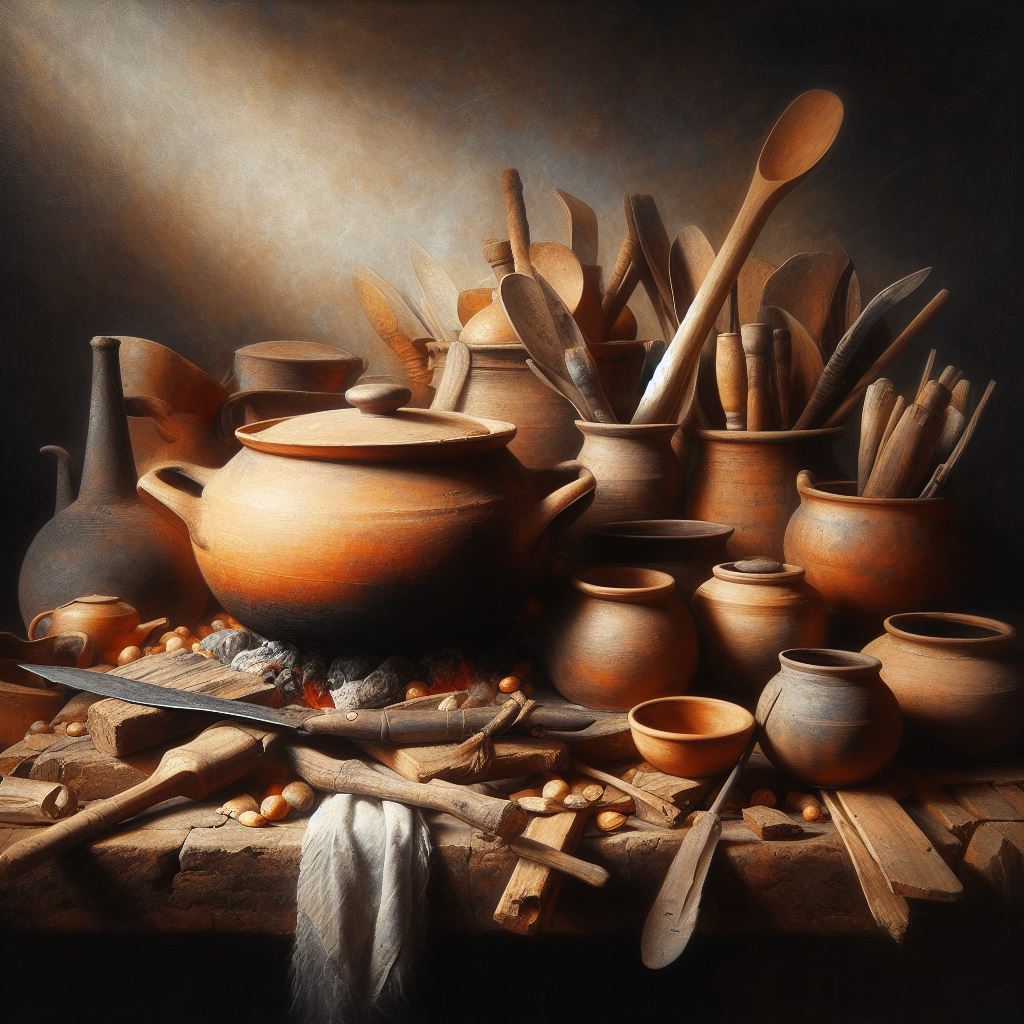
Chapter 3: Types of Ancient Cookware
3.1. Clay and Terracotta Cookware
3.1.1. Characteristics and Uses
Clay and terracotta cookware are revered for their capability to retain and distribute heat evenly, making them quintessential for slow cooking processes. These utensils, derived from natural earthen materials, have been pivotal in cooking practices across various civilizations. Their porous nature allows the food to breathe, enhancing the depth and complexity of flavors in dishes.
3.1.2. Maintenance and Care
Maintaining clay and terracotta cookware requires adherence to specific guidelines to prolong their durability. It is essential to season them before initial use, and refrain from subjecting them to sudden temperature changes to avoid cracking. Cleaning should involve mild detergents and soft scrubbers to maintain the integrity of the cookware surface.
3.1.3. Modern Variations and Brands
Today, several brands amalgamate traditional knowledge with modern innovations to provide clay and terracotta cookware that aligns with contemporary cooking needs. These variations might involve ergonomic designs, refined finishes, and compatibility with different heat sources, ensuring a seamless integration into modern kitchens.
3.2. Cast Iron Cookware
3.2.1. Characteristics and Uses
Cast iron cookware, renowned for its unparalleled heat retention and distribution, has been a cooking mainstay for centuries. It is especially esteemed for grilling and frying due to its ability to withstand high temperatures. Cast iron utensils like the Mexican comal are synonymous with longevity and are known to be passed down through generations, accentuating their historical significance in culinary traditions.
3.2.2. Seasoning and Care
Proper seasoning is crucial for cast iron cookware, involving coating the surface with oil and heating it to create a natural, non-stick layer. This layer is integrally preventing rust and enhancing the cookware’s performance. Regular seasoning, proper cleaning without harsh detergents, and timely drying are indispensable to maintain cast iron comal cookware’s efficacy.
3.2.3. Contemporary Cast Iron Products
Contemporary cast iron products meld historical robustness with modern-day convenience. They are available in a plethora of shapes and sizes, catering to diverse cooking needs. Some modern cast iron cookware like the outdoor comal also comes pre-seasoned, offering immediate usability and added convenience to the users.

3.3. Copper Cookware
3.3.1. Attributes and Applications
Copper cookware stands out for its exceptional thermal conductivity, offering precise temperature control. This makes it a preferred choice for professional chefs for cooking temperature-sensitive dishes. Its aesthetic appeal, coupled with its culinary advantages, makes copper cookware a sought-after addition to both professional and home kitchens.
3.3.2. Benefits and Drawbacks
While copper cookware excels in heat conductivity and offers unparalleled control, it necessitates regular polishing to maintain its luster. Additionally, its reactive nature calls for a lining of other metals like stainless steel or tin to prevent food reactions, potentially impacting the taste and nutritional value of the food.
3.3.3. Modern-day Copper Cookware Options
Modern iterations of copper cookware infuse traditional benefits with enhanced features like durable linings and ergonomic handles. These advancements make copper cookware more user-friendly and adaptable to the evolving culinary landscape, allowing chefs and home cooks to leverage its unique attributes efficiently.
This chapter unveils the various types of ancient cookware, elucidating their characteristics, uses, and the care they necessitate. The continual innovation in these cookware types underlines their enduring relevance in the culinary world, reflecting a harmonious blend of tradition and modernity in cooking practices.
Chapter 4: Ancient Cookware in Various Cultures
4.3. Ancient Mexican Collection
4.3.1. Role and Relevance
The Ancient Mexican Collection manifests the quintessence of Mexico’s rich culinary culture. It presents a diverse range of cookware that has been foundational in shaping the nation’s culinary heritage. The Mexican comal, a traditional Mexican griddle, serves as a testament to the intricate relationship between ancient cooking methods and Mexico’s illustrious gastronomic tapestry. It played an integral role in traditional cooking processes, ensuring the sustenance and vitality of communities through the preparation of staple foods like tortillas and quesadillas.
4.3.2. Distinctive Features and Functions
Mexican Comal: A Symbol of Tradition
The Mexican comal is recognized for its versatility and functionality, often seen as a flat or slightly convex griddle. Traditionally made from clay, modern variations include cast iron and metal, catering to the evolving needs of contemporary kitchens. The comal grill has been indispensable in rendering the distinct flavors and textures characteristic of Mexican cuisine, used for roasting vegetables and meats and, more notably, for baking tortillas.

Evolution of Design
While retaining its foundational structure, the comal has undergone several refinements, including the integration of handles for enhanced maneuverability and the incorporation of legs to facilitate use as an outdoor comal, enabling chefs to exploit the diverse cooking environments.
Subtle Variations
The comal’s subtle variations in design and material reflect the diverse geographical and cultural landscapes of Mexico, with each region imparting its unique influence, thereby contributing to a range of comals, each distinct in its utility and aesthetic.
4.3.3. Contribution to Mexican Culinary Tradition
Impact on Cuisine
The intricate dance of fire and metal that unfolds on the surface of a Mexican comal is central to the creation of myriad Mexican dishes. Its enduring presence in Mexican kitchens underscores its irreplaceable role in shaping the flavors, textures, and aromas distinctive to Mexican cuisine.
Culinary Techniques
Beyond its physical attributes, the comal is synonymous with an array of culinary techniques that are emblematic of Mexican cooking. The art of toasting and searing ingrained in its usage imbues dishes with an unparalleled depth of flavor, encapsulating the essence of Mexico’s culinary identity.
Preservation of Cultural Heritage
The persistent use and reverence of the comal in modern kitchens represent the continual acknowledgment and preservation of Mexico’s rich culinary and cultural heritage. The Mexican griddle is not merely a cooking apparatus but a vessel that carries the ancestral knowledge, culinary traditions, and cultural narratives of the Mexican people.
4.3.4. Takeaways: A Legacy Etched in Clay and Metal
The Mexican comal, with its timeless design, enduring functionality, and integral role in the culinary domain, stands as a symbol of Mexican cultural heritage and gastronomical excellence. It has not only sculpted the landscape of Mexican cuisine but also transcended its culinary confines to become a beacon of cultural identity and heritage. The Ancient Mexican Collection, of which the comal is a pivotal component, serves to connect generations, embodying the resilience, innovation, and spirit of the Mexican people, thereby ensuring that the rich tapestry of Mexican culinary tradition continues to flourish and enchant the world.
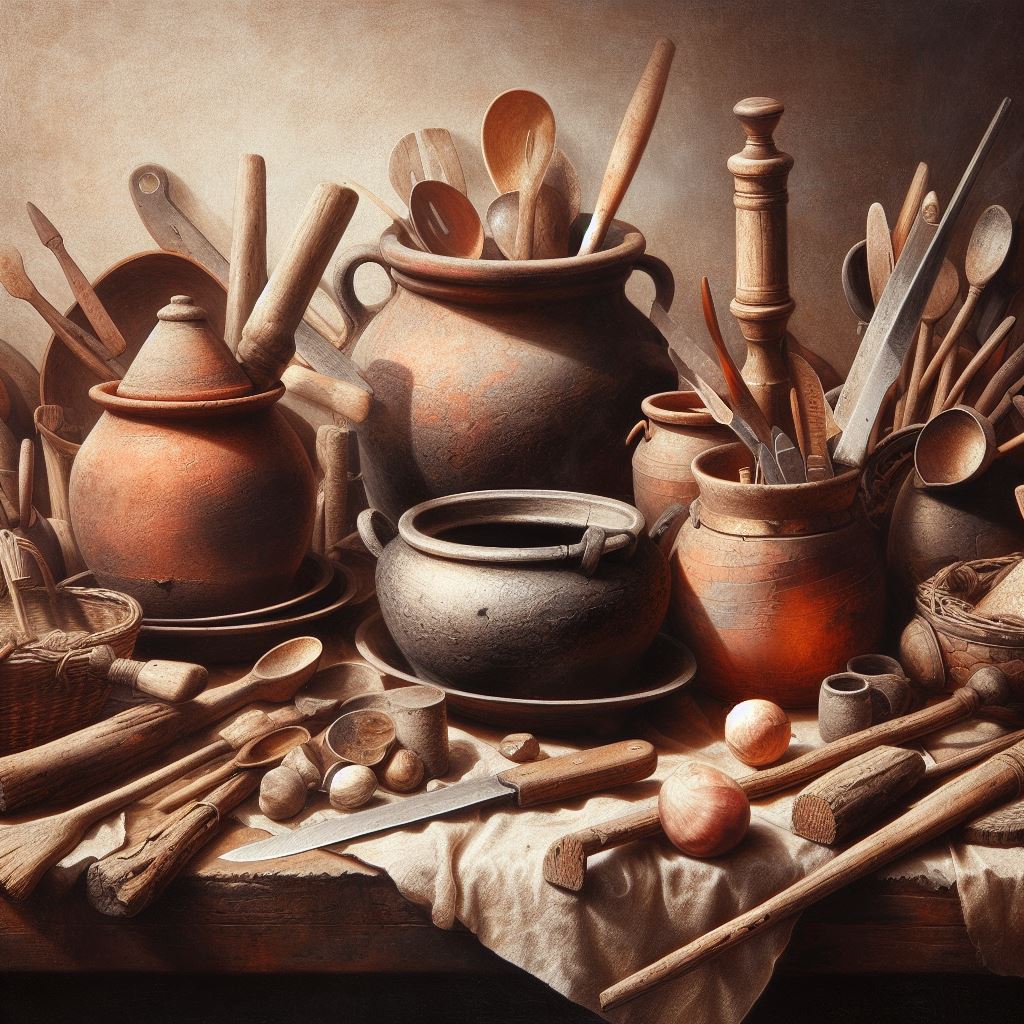
Chapter 5: The Modern Relevance and Adaptation of Ancient Cookware
5.1 The Resurgence of Ancient Cookware
5.1.1 Health and Flavor Benefits
The modern kitchen, adorned with a myriad of technological advancements, has seen a notable resurgence in the usage of ancient cookware. Health enthusiasts and culinary experts alike are embracing traditional cooking implements, extolling the health and flavor benefits derived from their use. The porous nature of materials like clay and terracotta allows for slow cooking and even heat distribution, unlocking intricate flavors and preserving the nutritional value of the food.
5.1.2 Sustainability and Eco-friendliness
Amidst rising environmental concerns, the sustainable aspect of ancient cookware is gaining prominence. The ecological footprint of manufacturing and disposing of these traditional utensils is substantially lower compared to their modern counterparts. The longevity and biodegradability of materials such as cast iron and clay contribute to waste reduction and promote eco-friendly cooking practices.
5.1.3 Influences on Modern Cookware Designs
The timeless appeal and practicality of ancient cookware have significantly influenced contemporary cookware designs. Modern cookware brands integrate the functional aspects of traditional implements, like the Mexican comal and the comal grill, creating products that amalgamate antiquity with modernity. The emphasis is on enhancing the culinary experience while maintaining convenience and aesthetic appeal.
5.2 Brands and Online Platforms Offering Ancient Cookware
5.2.1 AncientCookware.com Overview
AncientCookware.com stands out as a distinguished platform offering a versatile range of authentic ancient cookware. From the Mexican griddle to clay pots, the site provides a plethora of options catering to diverse cooking styles and preferences. The meticulous detailing and adherence to traditional crafting methods ensure the authenticity and quality of the products.
5.2.2 Products Available on Amazon, Etsy, and Wayfair
Prominent online retailers like Amazon, Etsy, and Wayfair feature an extensive collection of ancient cookware, accommodating the varying needs of global consumers. These platforms host products like the outdoor comal, comal grill and Mexican comal which are revered for their functionality and rustic charm. Detailed product descriptions, customer reviews, and competitive pricing on these platforms enable informed purchasing decisions.
5.2.3 Customer Reviews and Feedback
Customer testimonials and feedback are pivotal in discerning the quality and reliability of ancient cookware. Prospective buyers heavily rely on the experiences of previous users to gauge the performance and durability of products like the Mexican comal. The transparency and accessibility of customer reviews on online platforms augment the buying process, ensuring customer satisfaction and product credibility.
Takeaways
The modern adaptation and relevance of ancient cookware are emblematic of the enduring allure and practicality of these timeless culinary tools. The amalgamation of health benefits, sustainability, and the enriched flavor profile rendered by traditional cookware are paramount in this resurgence. Platforms like AncientCookware.com, along with other online retailers, facilitate the accessibility to authentic and diverse ancient cookware options, enabling a harmonious blend of tradition and modernity in contemporary kitchens.
Chapter 6: Caring for Ancient Cookware
6.1 Maintenance and Preservation Techniques
6.1.1 Cleaning and Storing
Proper cleaning and storing are vital to maintain the longevity of ancient cookware such as the Mexican comal. Ensuring that the cookware is cleaned appropriately, avoiding abrasive cleaners, and storing in a cool, dry place can significantly impact the life of such utensils. For example, a Mexican griddle or comal grill, often used outdoors, should be stored indoors after use to avoid exposure to the elements, ensuring it remains functional and retains its character.
6.1.2 Repairing and Restoring
In cases where cookware like the outdoor comal sustains damage or shows signs of wear, repairing and restoring become essential. It involves carefully addressing any cracks, scratches, or rust that may have formed. This is crucial as these signs of wear could potentially compromise the cookware’s functionality and the food’s safety and quality cooked on it.
6.1.3 Preventing Damage and Wear
Preventive measures include regular seasoning of cast iron cookware, avoiding sudden temperature changes to prevent cracks in clay cookware, and using soft, non-abrasive sponges for cleaning to avoid scratches and damage. In addition, avoiding the use of metal utensils on such cookware can also help in preventing damage.
6.2 Food Safety and Usability
6.2.1 Assessing the Safety of Old Cookware
When using ancient cookware, particularly those acquired from vintage stores or inherited, it is essential to assess the safety. Scrutinizing for any signs of damage, wear, or contamination is crucial. Furthermore, ensuring that any coatings or materials used are food safe and do not leach harmful substances into the food is paramount. For cookware like the Mexican comal, it is necessary to ensure that it is free from cracks and rust that could harbor bacteria and compromise food safety.
6.2.2 Modern Regulations and Standards
Contemporary standards and regulations are stringent about the materials and coatings used in cookware, ensuring they are food safe and do not leach harmful chemicals. It is crucial to be knowledgeable about these standards when using ancient cookware to ensure safety. For instance, any cookware with lead-based glaze should be avoided for cooking, and any copper cookware should be lined with a safe material to prevent copper poisoning.
By adhering to proper maintenance, restoration, and safety checks, enthusiasts can continue to enjoy the unique flavors and cooking experiences provided by ancient cookware like the Mexican comal, while ensuring safety and longevity. The essence of culinary heritage can thus be preserved, allowing future generations to explore and enjoy the rich tapestry of ancient cooking traditions.
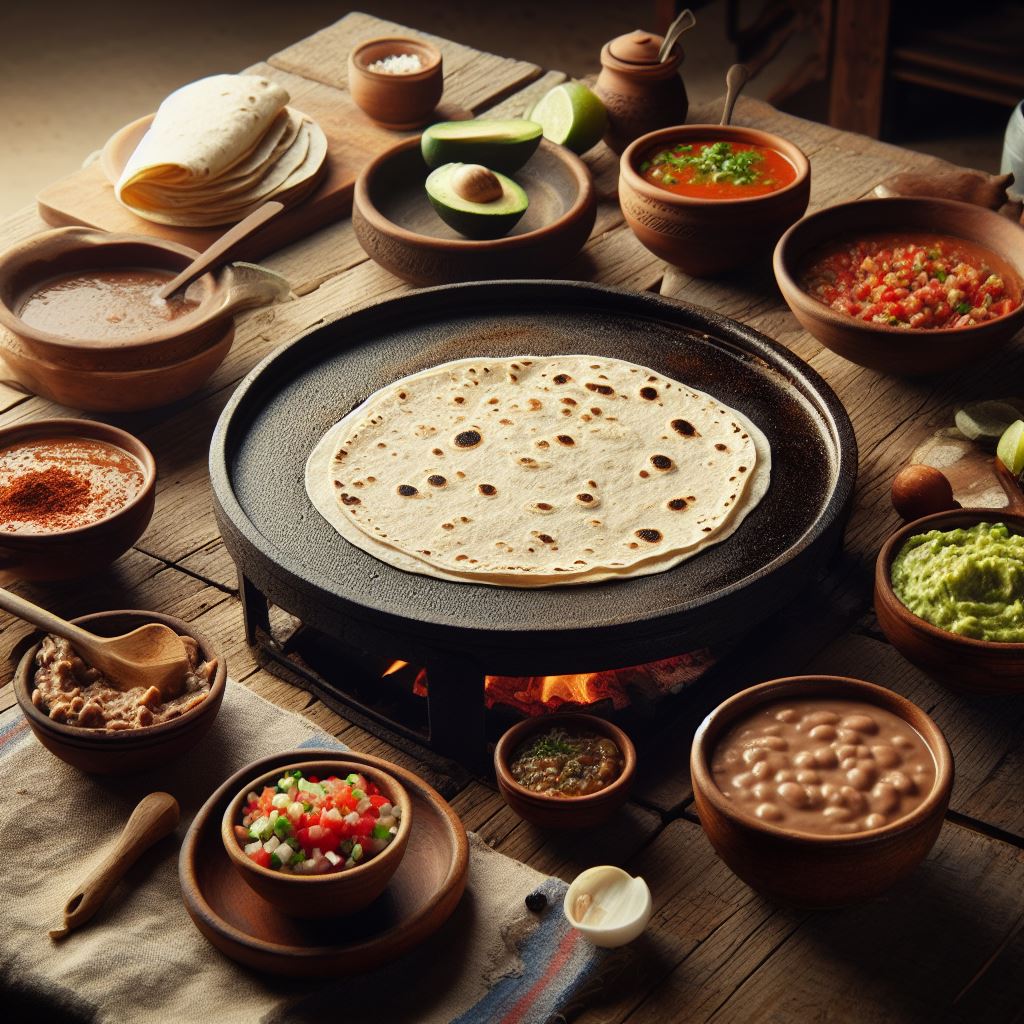
Chapter 7: The Sustaining Legacy of Ancient Cookware
7.1 Reflection on Ancient Cookware’s Profound Legacy
The diverse forms of ancient cookware have withstood the test of time, signifying an inherent richness and multifunctionality that continue to be relevant. The reflection on this legacy involves acknowledging the immeasurable value they bring to culinary arts, illustrating how they are ingrained within various cultures, and their ongoing influence in contemporary cooking methodologies.
7.1.1 Insights into Cultural Enrichment
The contribution of elements such as the Mexican comal and the Indian tava transcends beyond mere cooking tools; they are emblematic cultural artifacts that encapsulate centuries of culinary heritage and practices. Each piece, with its unique design and functional attributes, tells a story of civilization, innovation, and culinary evolution.
7.1.2 Symbolism of Time-Honored Traditions
Items like the Mexican griddle are not just utilitarian; they are laden with symbolism, embodying traditions and rituals that have been faithfully passed down through generations. These pieces serve as tangible reminders of ancestral wisdom and ancestral culinary approaches, emphasizing a connection to roots and origins.
7.2 Enduring Appeal in Contemporary Culinary Landscape
Ancient cookware’s appeal lies in its ability to marry tradition with modernity seamlessly. Its sustained relevance is evident as these age-old tools are still actively used and cherished, highlighting their adaptability and unmatched performance.
7.2.1 Revival and Modern Adaptation
The resurgence of ancient cookware like the comal grill is propelled by a growing appreciation for authentic and traditional cooking experiences. Modern adaptations aim to maintain the essence while incorporating enhancements that align with contemporary needs, ensuring these timeless pieces find their rightful place in today’s kitchens.
7.2.2 Infusion of Authenticity and Flavor
The unique constructions, such as that of an outdoor comal, facilitate an unparalleled flavor infusion, enhancing the overall culinary output. This distinct taste profile, intertwined with authenticity, is sought after by culinary enthusiasts seeking to recreate genuine, traditional dishes, thereby elevating their gastronomical endeavors.
7.3 Anticipating Future Trajectories
The journey of ancient cookware is perpetual, with its evolving forms and functions poised to continually shape culinary narratives. The forward momentum hints at a future where the symbiosis of tradition and innovation will usher in new dimensions in cookware design and usage.
7.3.1 Sustainable Innovations
Anticipating future developments involves envisaging innovations that uphold sustainability. The ongoing trend of eco-consciousness is likely to inspire the creation of cookware that is not only reflective of cultural essence but also embodies ecological responsibility, fostering a harmonious balance between heritage and environmental preservation.
7.3.2 Technological Integrations
The amalgamation of cutting-edge technology with traditional cookware is foreseen to augment user experiences while preserving the inherent characteristics of the ancient tools. These advancements are expected to refine usability, optimizing the interaction between the cookware and modern cooking appliances, thus widening the scope of culinary possibilities.
7.3.3 Expanding Culinary Horizons
The perpetual evolution of ancient cookware will likely continue to enrich the global culinary tapestry. The dynamic interplay between diverse cooking techniques and innovative cookware will facilitate the exploration of uncharted culinary territories, enabling the continual discovery of novel flavors and cooking methodologies.
Concluding Reflection
The sustaining legacy of ancient cookware stands as a testament to its irreplaceable value in the culinary world. Its multifaceted influence, transcending cultural boundaries and temporal constraints, accentuates the endless possibilities that lie within the confluence of tradition and modernity. The future landscape of cookware is envisaged to be a rich mosaic, intertwining the essence of the past with the innovations of the future, continuing to inspire and elevate culinary experiences across the globe.
Chapter 8: Conclusion
8.1 Summarization of Ancient Cookware’s Impact and Legacy
Ancient cookware, epitomized by the robust mexican comal and versatile mexican griddle, has left an indelible mark on culinary practices worldwide, transcending epochs and civilizations. These traditional cooking implements have shaped not merely the gastronomic landscapes of their origin but have also significantly influenced global culinary paradigms. The time-honored designs of cookware, such as the comal grill, have persisted through millennia, underscoring their enduring functionality and appeal.
8.2 Reflection on Its Enduring Appeal and Modern Relevance
The persistent allure and prevailing use of ancient cookware underscore its unwavering relevance in contemporary cuisine. The outdoor comal, for instance, remains a quintessential apparatus in Mexican culinary traditions, fostering a sense of communal cooking and sharedexperiences. The resilience and time-tested efficiency of ancient cookware, coupled with its inherent ability to enrich flavors and preserve nutritional integrity, have accentuated its appeal to modern connoisseurs and chefs alike. The fusion of traditional culinary wisdom and modern culinary needs has catalyzed a harmonious amalgamation, reinforcing the timeless appeal of ancient cookware.
Moreover, the adaptability of these age-old cooking tools, exemplified by the versatile comal grill, has facilitated their seamless integration into modern kitchens. The enduring fascination with and growing preference for these culinary relics are not solely predicated on nostalgia but are also propelled by their unassailable practicality and the unparalleled gastronomic outcomes they yield.
8.3 Anticipation of Future Trends and Developments in Cookware
As we navigate the evolving culinary landscape, the role of ancient cookware is anticipated to undergo continuous transformations, adapting to the changing preferences and needs of the global populace. Innovations in material science and design are poised to refine the functionality and enhance the durability of traditional cookware, like the mexican griddle, while retaining their intrinsic characteristics and benefits.
The potential synthesis of sustainability and technology with traditional cooking methodologies is likely to yield novel cookware solutions, marrying the ecological virtues of ancient practices with the convenience and precision of modern advancements. This amalgamation is expected to usher in a new era of culinary tools that are sustainable, efficient, and deeply rooted in the rich tapestry of ancient culinary heritage.
The resurgence in the popularity of ancient cookware is also indicative of a broader shift towards mindful and holistic cooking practices. This renewed focus on the intrinsic values and principles of traditional culinary arts is likely to foster a deeper appreciation and understanding of the diverse culinary heritages that have shaped our gastronomic journey through the ages.
In conclusion, the legacy of ancient cookware, from the resilient mexican comal to the multifunctional mexican griddle, is a testament to the timeless wisdom embedded in traditional culinary practices. The enduring appeal, coupled with modern innovations, is set to ensure the continual relevance and evolution of these culinary treasures, enriching our gastronomic experiences and preserving the invaluable culinary heritage of civilizations past.
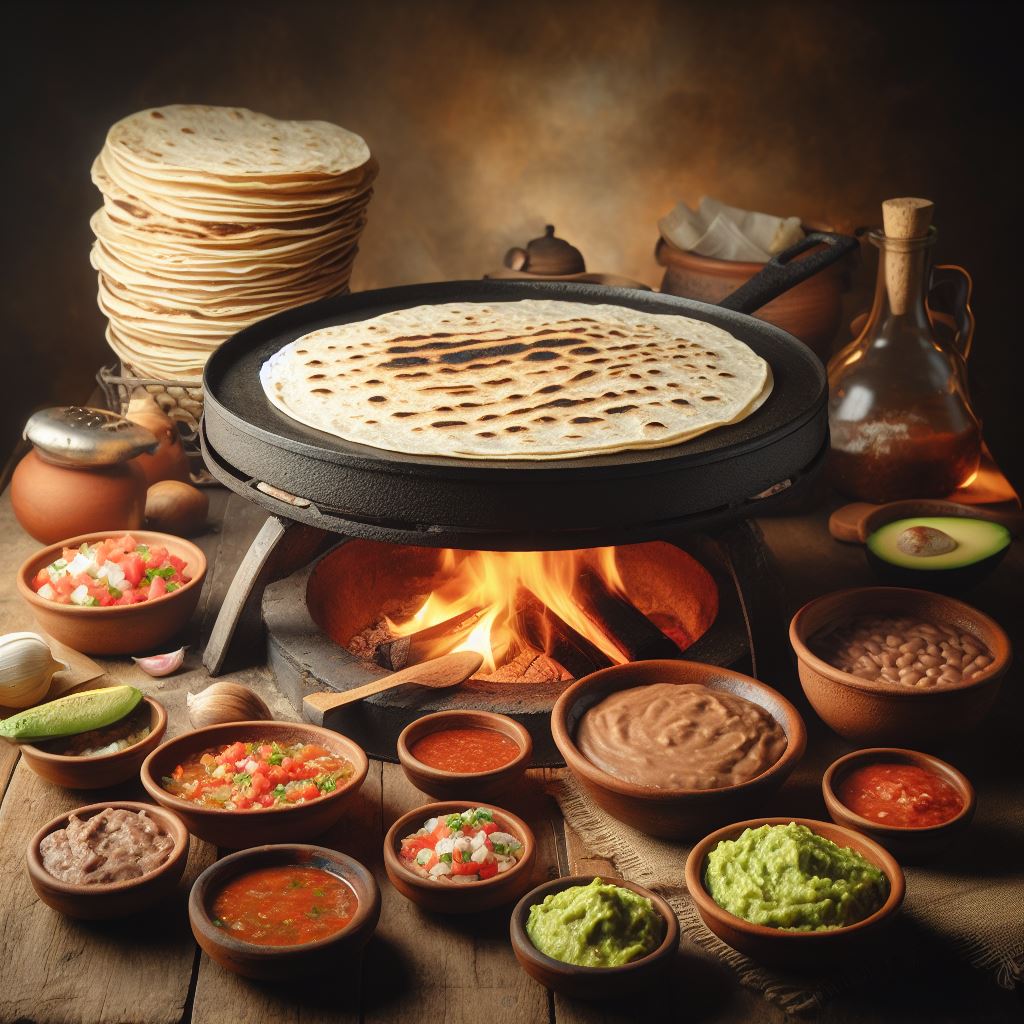
FAQ Ancient Cookware
Q.: What kind of products does Ancient Cookware specialize in?
A.: Ancient Cookware specializes in a range of unique cookware and kitchen tools from around the world, including clay cooking pots, earthenware pots, terracotta cookware, ollas de barro, cazuelas, la chamba cookware, clay curry pots, Comals, Griddles, and Paella Pans, reflecting a rich history of culinary traditions and craftsmanship.
Q.: Where can customers purchase ancient cookware products?
A.: A variety of ancient cookware are available on Amazon, Etsy, Wayfair, Walmart, and eBay, allowing for diverse shopping experiences and multiple purchasing platforms.
Q.: How does ancient cookware ensure the quality and authenticity ?
A.: Ancient Cookware prides itself on distributing cookware that is not only unique but also reflects the highest quality and authenticity. Many of their products are handmade, ensuring that each piece carries the tradition and craftsmanship inherent to its origin. Whether it’s clay pots from India or molcajetes from Mexico, each item is a testament to the culinary heritage of its respective culture.
Q.: Can ancient cookware be used to cook a variety of cuisines?
A.: Absolutely. The diversity in Ancient Cookware’s product line allows for the preparation of a multitude of cuisines from around the world. From preparing Bibimbap in clay pans to making curry in Indian clay pots, and cooking traditional Mexican dishes in cazuelas, Ancient Cookware provides the necessary tools for an authentic and global culinary experience.
Q.: Is ancient cookware suitable for modern kitchens and cooking methods?
A.: Yes, many ancient cookware designs are versatile and adaptable to various cooking methods used in modern kitchens. Whether it’s cooking on a stove, in an oven, or over an open flame, the cookware’s design and material ensure durability and functionality, allowing users to experience ancient cooking traditions in contemporary settings.
Q.: Why would one choose to use ancient cookware?
A.: Opting for Ancient Cookware allows users to experience a connection to culinary traditions and ancient cooking techniques. These products offer a unique aesthetic appeal, enhanced flavor profiles due to the use of natural materials, and a sustainable cooking option, making them an excellent choice for those looking to diversify their cooking experience and explore global cuisines in an authentic manner.
Q.: How do ancient cookware products compare to conventional cookware in terms of durability and maintenance?
A.: Ancient Cookware products are known for their durability, often crafted from robust materials like clay and terracotta, which have been used for centuries. However, maintenance may vary compared to conventional cookware. Some may require seasoning or specific cleaning methods to preserve their quality and prolong their lifespan. Proper care ensures that users can enjoy the benefits of these traditional cooking utensils for years to come.
Conclusion:
Ancient Cookware offers a unique and authentic range of cookware designs that allow culinary enthusiasts to delve into diverse global cuisines and cooking traditions. Available on various platforms, these products combine quality, functionality, and aesthetic appeal, providing a sustainable and enriching cooking experience for those eager to explore the culinary heritage of different cultures. By maintaining these products properly, users ensure the longevity and continued performance of their ancient cookware, bridging the gap between past culinary traditions and modern cooking needs.

